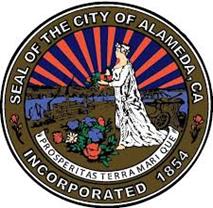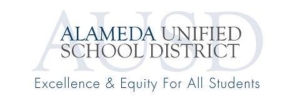May 17, 2018
FOR IMMEDIATE RELEASE
Contact:
Gail Payne, Senior Transportation Coordinator
510-747-6892
gpayne@alamedaca.gov
 Island High School celebrated the start of a free bus pass pilot program for its 120 students in partnership with the City of Alameda and paid for by the City’s Measure B and BB monies. Today’s celebration included a special assembly with presentations from Mayor Trish Herrera Spencer, City Councilmember Marilyn Ezzy Ashcraft, and Alameda Unified School District Superintendent Sean McPhetridge. “The students are very pleased, excited and grateful,” said Ben Washofsky, principal of Island High School. “The free bus passes will make a difference in school attendance.”
Island High School celebrated the start of a free bus pass pilot program for its 120 students in partnership with the City of Alameda and paid for by the City’s Measure B and BB monies. Today’s celebration included a special assembly with presentations from Mayor Trish Herrera Spencer, City Councilmember Marilyn Ezzy Ashcraft, and Alameda Unified School District Superintendent Sean McPhetridge. “The students are very pleased, excited and grateful,” said Ben Washofsky, principal of Island High School. “The free bus passes will make a difference in school attendance.”
The free AC Transit bus pass program began last month and will last until July 2019. The City prioritized this pilot after 64 percent of community survey respondents “Strongly Agreed” or “Agreed” that Alameda should make it easier for students to walk, bike, or take transit to and from school. In response, the Transportation Choices Plan addresses the need to improve transportation for youth and to make it easier to ride the bus.
Island High School is AUSD’s continuation high school, with 60 percent of the student body qualifying for free or reduced priced school lunches. The City initiated efforts at this school to best support these high school students and their opportunities to succeed. Island High School draws from students throughout Alameda, so they are more apt to need and use the AC Transit bus system. The free bus passes allow Island High School students to have unlimited local rides within the East Bay on AC Transit buses.
The City has requested that the Alameda County Transportation Commission’s Student Transit Pass Program include Island High School if the program expands in July 2019. The purpose of the countywide program is to make it easier for students to travel to/from school and school-related programs, jobs, and other activities. Results from the countywide program show that participating students take transit more often and have easier access to school, increased school attendance, and increased participation in afterschool jobs or non-school-based afterschool activities.


